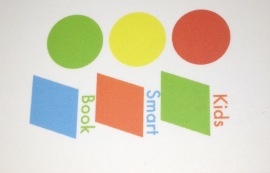Think of a time when you knew you had to do something, but were afraid to fail or disappoint. Now, what happens when that something becomes imminent. Does anxiety build? Do you try to delay the inevitable task or even cancel it?
Students who struggle with learning to read face a sort of anxiety/stress at school and at home and that is when coping behaviors begin to appear or in some cases take over.
Usually, children simply resist reading time by joking, giggling, playing around, excessively chatting. Sometimes they’ll come up with an excuse to leave the room, “I’ll be right back!”they say with a smile; anything, it seems rather than sitting in front of a page full of unknown words in a book.
This is what I see happen when I begin working with students who struggle to read.
Knowing these behaviors will happen, I do my best to ease the stress of the moment by taking small steps towards improving reading skills.
The first thing I do is to assess where the student’s reading level is (if they are reading) and I begin by using familiar, often rhyming or predictable books. For younger students, I often will go through the alphabet letters to see if the student has mastered the corresponding sounds. I also check to see if the student can read common sight words. I also have a few games to play which helps me to assess the phonemic awareness of a child. Basically, their ability to notice, think about and work with sounds in words.
When I use a book, it has been thoughtfully chosen based on what I know about the student (age, interests, personality, etc.) and what the reading level may be. This is important because it helps ease anxiety and also helps with motivation to read.
But before I even attempt to read a book with a child, I allow a student to preview and discuss what they believe the book will be about. Predicting in this way can help activate a child’s prior knowledge which readies the student to learn new information by connecting it to what they already know.
If the book is non-fiction, then there is more pre-reading strategies I teach before attempting to read a passage. But, I’ll save that for another post.
Once a student attempts to read a book with me, I listen carefully and I try not to jump in too quickly when struggle occurs. This helps me to see the level (or lack of) decoding skills that the student has when faced with a non-familiar words. It’s a fine line between allowing some struggle to occur while not allowing frustration to build which can trigger the anxiety behaviors.
These steps help ease the resistance to read and build reading skills. These and smiling, encouraging and rewarding a student with high fives at even through the smallest victories. The victories are actually big if you look at the whole picture!
I enjoy the challenge of tutoring children because the reward is huge. Success in reading will bring success in all school subjects. My job is successful when after working with a student, I see confidence increase while anxiety decrease and of course when a student is enjoying reading and learning.
Reading confidently is a valuable skill and when I hear the report that student is progressing and reading more, I celebrate right along with the parents knowing a significant something has occurred.
~Peace readers.
